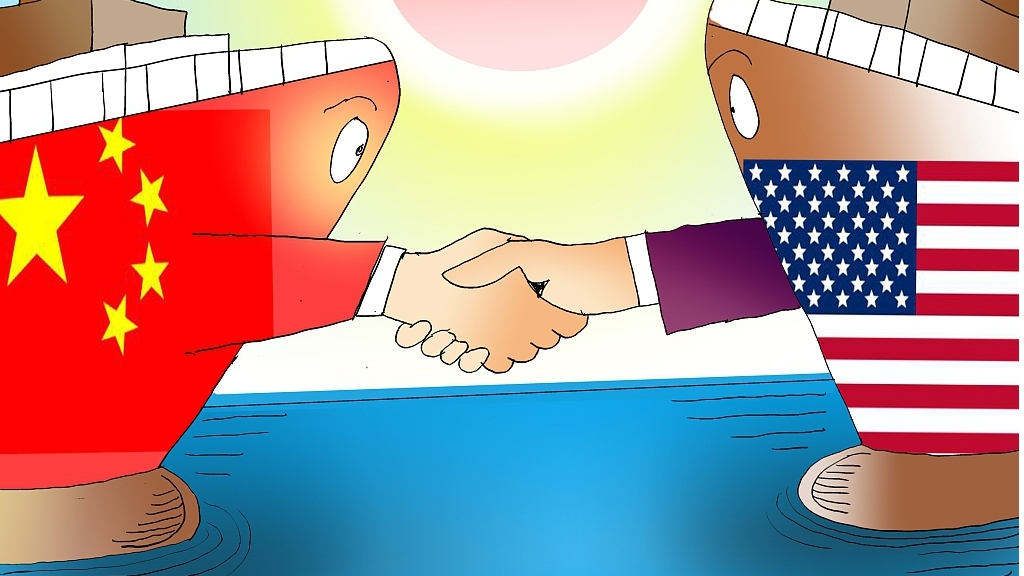
16:46, 11-Mar-2019
Highlight - China and the US need to see eye to eye
Updated
17:47, 12-Jul-2019

The globe is hardly trouble-free; uncertainties and unstable factors abound. Trade frictions between the US and China, are increasing, causing negative pressures internationally. As a result, some business leaders have voiced their concerns.
For instance, Eric Schweitzer, president of the German Chambers of Industry and Commerce (DIHK), stated, “Germany shares a trade volume with both countries of nearly 170 billion euros (199.8 billion U.S. dollars) each.” The combined 335 billion euros account for more than 15 percent of Germany's total trade.
This shows how deeply the German economy intertwines with the American and Chinese economies and how seriously the relationship between China and US affects Germany. This reinforces the adage that a trade war produces only losers. But why, in the eyes of the US, has China become a competitor rather than a partner?
Robert Hormats, former Under Secretary of State for Economic, Energy and the Environment, observes that China will compete on economic matters with the US, just like the US competes with Britain and Germany.
In his view, the important thing that many people miss is that we can compete effectively and constructively if we have a framework for doing so. And what's happening now is that China's rise has been such a surprise to so many Americans — China's transformation from producing labor-intense products to producing high tech, like AI and quantum-computing, has been stunning. Thus, it is natural for there to be competition in global markets. But is there also potential for the US and China to cooperate and even have synergies?

Trade Complementarity between China and the US. VCG/·Photo
Trade Complementarity between China and the US. VCG/·Photo
There is hope for trade complementarity.
On 24th September of 2018, the State Council Information Office of PRC, issued a white paper, The Facts and China's Position on China-US Trade Friction. This document mentioned that China-US bilateral trade has a strong complementarity.
The US stands at the mid-and high-end in global value chains and it exports capital goods and intermediary goods to China. Remaining at the mid-and low-end in global value chains, China mainly exports consumer goods and finished products to the US.
The two countries play to their comparative strengths and the two-way trade is highly complementary. The effect of such complementarity can be evidenced by the fruits the two reaped together.
UN statistics indicate that in 2017 US exports of goods to China amounted to US$129.89 billion, a 577% increase from US$19.18 billion in 2001, and far higher than the 112% average growth rate of overall US exports. Of course, US imports from China has also grown greatly, so that the substantial trade imbalances remains a critical issue — but far from the only issue.
Therefore, in a world of increasing uncertainty, instability and insecurity, countries should not engage in zero-sum games that maximizes one's self-interest far above others' interests and indeed sees others' gains as one's losses. China's development should be a boon for America to boost its economy. Differences need not be disputes.
SITEMAP
Copyright © 2018 CGTN. Beijing ICP prepared NO.16065310-3
Copyright © 2018 CGTN. Beijing ICP prepared NO.16065310-3